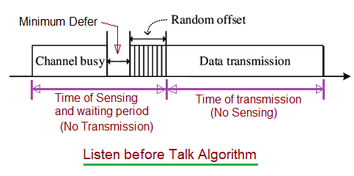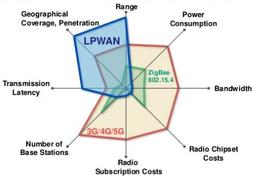
LiFi Dongle and Transceiver: Block Diagram and Working
Explore the LiFi dongle and transceiver: its block diagram, working principles, and role in delivering internet over light waves for LiFi-based systems.
Showing 20 posts (Page 8 of 22)
Advertisement

Explore the LiFi dongle and transceiver: its block diagram, working principles, and role in delivering internet over light waves for LiFi-based systems.
Explore the LiFi frequency spectrum, including visible light, UV, and IR, and understand the relationship between wavelength and data transmission rates.

Explore LiFi technology: its protocol layers, how it works, and its applications. Learn about this high-speed, secure wireless communication method using visible light.

Explore the differences between LiFi (Light Fidelity) and GiFi (Gigabit Wireless) technologies. Discover their features, advantages, and disadvantages.

Explore the differences between LiFi and WiFi technologies, focusing on their operating principles, speed, security, and applications to help you choose the best wireless solution.

Explore the benefits and drawbacks of LiFi technology, an emerging wireless communication using light for faster data transmission and increased bandwidth.
Lightwave RF is a home automation technology using the 433.92 MHz band. It enables control of lighting, heating, security, and more via controllers and slaves, often integrated with WiFi for smartphone access.

Explore the Listen Before Talk (LBT) algorithm, its advantages like collision avoidance and efficient channel use, and disadvantages like power needs and time overhead.

Explore LMDS and MMDS technologies for wireless broadband, including their architectures, advantages, disadvantages, and a detailed comparison.
Explore LoRa frequency bands for Europe, US, UK, and Australia. Understand regional differences in spectrum allocation for optimal IoT network performance.
Explore the core differences between LoRa and LoRaWAN in IoT. LoRa handles physical layer modulation, while LoRaWAN is a network protocol for device communication.

Explore a detailed comparison of LoRa and Zigbee technologies, covering specifications, network architecture, protocol stacks, and applications.

Explore the fundamentals of LoRa transceivers, focusing on the LoRa Transceiver module by Microchip. Understand components, features, and applications in IoT.

Explore the LoRaWAN architecture, including end devices, gateways, network servers, and application servers, highlighting their roles in IoT data transfer.

Explore the functionality, applications, and benefits of LoRaWAN gateways in enabling long-range, low-power IoT networks. Learn how they connect devices to the cloud.

Explore the architecture and advantages of LoRaWAN water meters for remote monitoring and management of water consumption in IoT applications.

Explore the differences between Line of Sight (LOS) and Non-Line of Sight (NLOS) wireless channels, their impact on signal quality, and common applications.

Explore the pros and cons of Low Power Wide Area Networks (LPWANs) for IoT, including range, power, cost, and limitations.
An introduction to LTE (Long-Term Evolution) concepts and links to useful LTE MATLAB code for simulations, developed by Vienna University of Technology.

Learn the LTE cell search procedure used by User Equipment (UE) to synchronize with an LTE cell and detect its Physical Layer Cell ID (PCI).
Advertisement